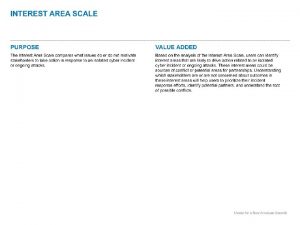Project management Chistyakova Nataly O Definition of stakeholder









- Slides: 9

Project management Chistyakova Nataly O.

Definition of stakeholder PMI define a stakeholder as: ‘A person or organization (e. g. customer, sponsor, performing organization or the public) that is actively involved in the project, or whose interests may be positively or negatively affected by the execution of the project. A stakeholder may also exert influence over the project and its deliverables. ’ (PMBOK® Guide) Process Group Key Deliverables Initiating Stakeholder Register Management Planning Stakeholder Management Plan 3. Manage Stakeholders Engagement Executing Documentation Updates 4. Control Stakeholders Controlling Engagement Monitoring & Performance Reports 1. Identify Stakeholders 2. Plan Stakeholders ISBN 978 -1 -62620 -988 -6 © www. free-management-ebooks. com

Main stakeholders ISBN 978 -1 -62620 -988 -6 © www. free-management-ebooks. com

Identify Stakeholders This process takes place before the detailed planning stage of the project begins, as it is an essential input to the project plan. It has a dual purpose: 1 st To identify the stakeholders 2 nd To analyze the project’s relationship with them to establish their: ○ Level of engagement or interest in the project ○ Level of influence on it. ISBN 978 -1 -62620 -988 -6 © www. free-management-ebooks. com

ISBN 978 -1 -62620 -988 -6 © www. free-management-ebooks. com Identify Stakeholders There are three broad categories of stakeholders: ● Involved — this group would include the project manager, sponsor, and team members. ● Affected — this group is more diverse and includes both internal and external entities, for example, other departments within the organization, customers, suppliers, regulatory bodies etc. In the case of a construction project, those affected might include also neighboring premises and the wider local community. ● Exerting Influence — this group includes the press (local and national), environmental groups and other ‘interest’ groups (for example worker’s rights) as well as departments within the performing organization that are not directly affected by the project but may wish to influence it in some way. This last group would typically include legal, financial and public relations departments

Identify Stakeholders It is important to identify the stakeholders early in the project, and to analyze their levels of interest, expectations, importance and influence. They should then be classified according to their: Interest Influence & Involvement. ISBN 978 -1 -62620 -988 -6 © www. free-management-ebooks. com

Identify Stakeholders: Tools and Techniques Stakeholder analysis can be broken down into two stages: ● Stakeholder Identification —create a list of who has an interest, involvement or influence on the project. For each stakeholder define their level of authority and level of interest. ● Stakeholder Impact Assessment — assess the type of impact they could have on the project and then prioritize and group the stakeholder list created in the first stage. ISBN 978 -1 -62620 -988 -6 © www. free-management-ebooks. com

Identify Stakeholders: Tools and Techniques This knowledge will form a key element of how you manager each of your stakeholders. ● Low (Interest)—Low (Authority) quadrant. These stakeholders need a simply strategy that will reassure them that the project is meeting their needs. They need the lowest level of management. ● Low (Interest)—High (Authority) quadrant. This stakeholder group can wield significant power over your project and how you manage them must ensure they are kept informed accordingly retaining their valuable support. It requires a nominal amount of management time due to their low interest in the project, but must be specific to the stakeholder’s role in the project. ● High (Interest)—Low (Authority) quadrant. Neglecting this group just because their authority is low is a bad management strategy. Their interest in the project is high so your management efforts are greater than the previous group and focus on convincing them that their interests are being serviced. ● High (Interest)—High (Authority) quadrant. As you would expect these stakeholders need the project manager to carefully and closely manage their ways to keep them informed and supportive as the project progresses.

Stakeholder Register















